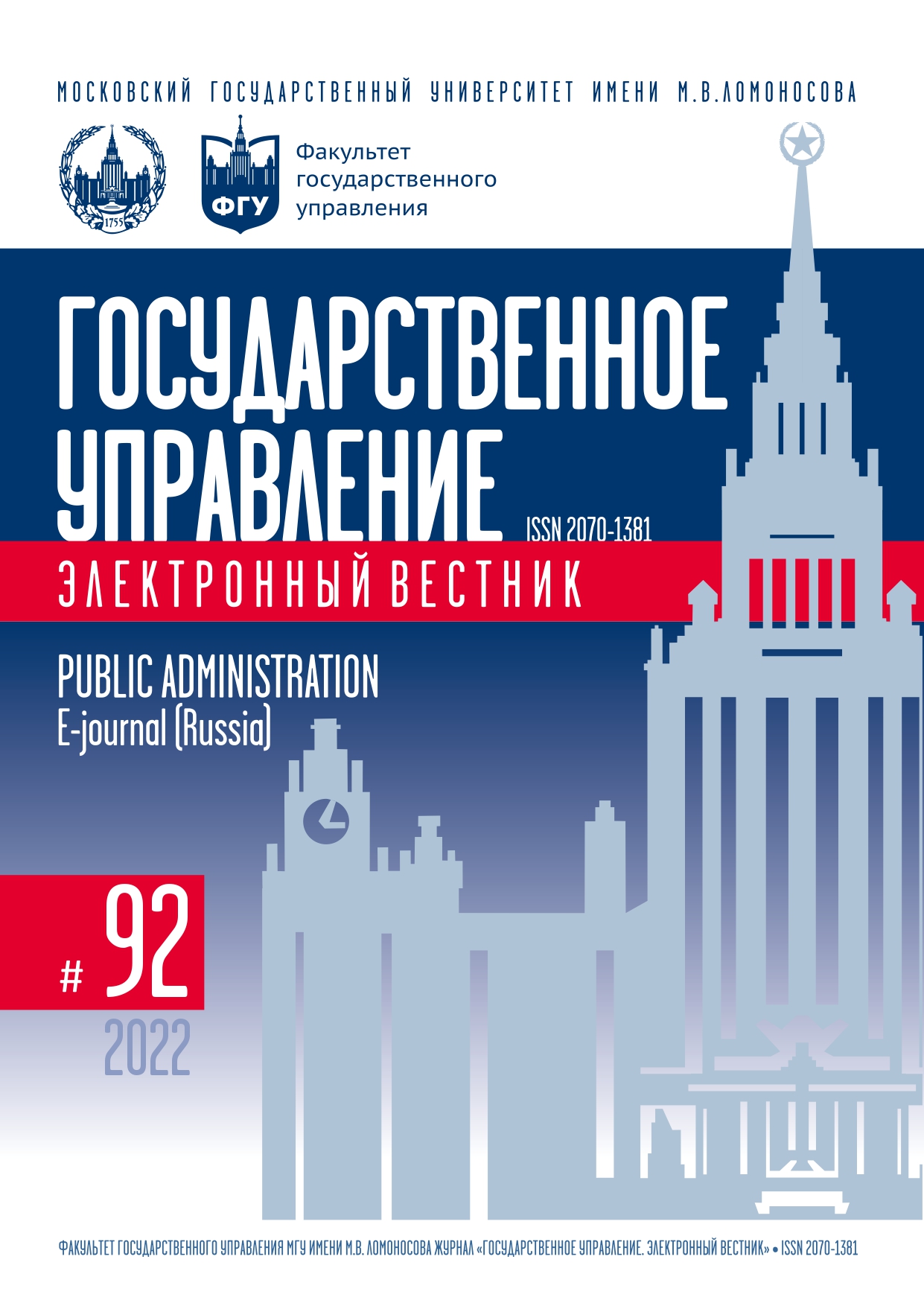Directions of Transforming Regional Innovation System of Territories
Keywords:
Regional innovation system, innovative sustainability, sustainable innovative development, regional stimulators, innovative cluster, digital platform, Ural Federal District, Sverdlovsk Region, Kurgan Region, Khanty-Mansiysk Autonomous Okrug — YugraAbstract
The relevance of this study is defined by the need to solve the problem connected with the lack of mechanisms and effective practices for ensuring sustainable innovative development of regions, exacerbated by the deterioration of macroeconomic conditions. The aim of the study is to develop directions for transforming the regional innovation system of territories. To achieve this goal, a set of author’s methodological developments was applied, including a system of regional stimulators for ensuring innovative sustainability, the concept of a map of the “cores” of an innovative cluster, an algorithm for maintaining sustainable spatial development by creating unified information platforms for strategic regional development and forecasting. These approaches and concepts were tested in relation to three regions of the Ural Federal District: Sverdlovsk Region, Kurgan Region, Khanty-Mansiysk Autonomous Okrug — Yugra. As a result, a three-level system of regional stimulators for ensuring innovative sustainability was improved and a system of measures for innovative development was concretized, taking into account the specifics of each region under study; the concept, passport and map of the “cores” of the innovative cluster “Engineering and Technologies for the North” were developed for the Khanty-Mansiysk Autonomous Okrug — Yugra, the implementation of which will increase the level of region innovative sustainability, even out the imbalances of socio-economic development, and will also contribute to the implementation of priorities of the National Technological Initiative; the architecture of a unified information platform that ensures mutually beneficial cooperation of all participants in socio-economic processes, including at the interregional level, expressed in positive bilateral and cross-effects and reducing the risks of innovative development, was designed. The complex of the presented results contributes to the solution of the stated scientific and practical problem. The tools proposed and tested on the example of the regions of the Ural Federal District for the formation and maintenance of trends in sustainable innovative development may be used in the further development of a model of sustainable spatial development of regions and maintenance of innovative trends.
References
Воронов А.С. Инновационная привлекательность регионов Уральского федерального округа: сравнительный анализ // Дискурс-Пи. 2022. Т. 19. № 1. С. 124–149. DOI: 10.17506/18179568_2022_19_1_124.
Воронов А.С. Развитие базовых принципов инновационной политики на региональном уровне // Государственное управление. Электронный вестник. 2018. № 71. С. 6–20. DOI: 10.24411/2070-1381-2018-00099
Воронов А.С. Разработка региональных стимуляторов устойчивого инновационного развития // Экономика и предпринимательство. 2015. № 1 (54). С. 258–261.
Гуськова Н.Д., Краковская И.Н., Новиков М.П. Проблемы и перспективы развития инновационных кластеров в промышленности России // Инновационная деятельность. 2020. № 3 (54). С. 13–20.
Куценко Е.С. Пилотные инновационные территориальные кластеры России: модель устойчивого развития // Форсайт. 2015. Т. 9. № 1. С. 32–55. DOI: 10.17323/1995-459X.2015.1.32.55
Низамутдинов М.М., Орешников В.В. Информационная поддержка формирования стратегий инновационного развития регионов на основе адаптивной имитационной модели // Системы и средства информатики. 2018. Т. 28. № 2. С. 154–169. DOI: 10.14357/08696527180212
Суханова П.А. Актуальные вопросы исследования эффективности пространственного развития территорий: новые концепты кластерного развития европейских стран // Экономика: вчера, сегодня, завтра. 2017. Т. 7. № 7А. С. 120–133.
Antonioli D., Marzucchi A., Montresor S. Regional Innovation Policy and Innovative Behaviour: Looking for Additional Effects // European Planning Studies. 2014. Vol. 22. Is. 1. P. 64–83. DOI: 10.1080/09654313.2012.722977
Pavlov A.J., Batova V.N., Kovalyova N.N., Kolesnikov A.V., Sokolov A.Y., Soboleva Y.V. Problems of State Regulation of Innovation Policy in the Russian Federation and Foreign Countries // Journal of Advanced Research in Law and Economics. 2015. Vol. 6. № 4. P. 802–821.
Schot J.W., Steinmueller E. Three Frames for Innovation Policy: R&D, Systems of Innovation and Transformative Change // Research Policy. 2018. Vol. 47. Is. 9. P. 1554–1567. DOI: 10.1016/j.respol.2018.08.011

